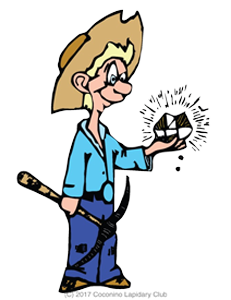
Thanksgiving Day 2017, my son Greg and I traveled to the old copper mining town of Bisbee for a two day exploration of the Bisbee Mining and Historical Museum, observing the, now non-operational, Lavender Open Pit Copper Mine, and soaking up the ambiance of this charming town perched on the low hills of the Mule Mountains. [Ref 1]
Mines
We found that mining activity in Bisbee began with the staking of mining claims in 1877. It evolved from underground mining at the Copper Queen Mine to operation of the Lavender Pit and its cessation of operation.
The Copper Queen Mine – The Copper Queen was mined over an approximately 100 year period. Beginning with the staking of its claim in 1877 and ending in 1974. [Ref 2] During its operation, the Copper Queen Mine produced over eight billion tons of copper, gold production of almost three million ounces and over seven and a half million ounces of silver. [Ref 3] It has also yielded spectacular specimens of copper minerals.





The Lavender Pit – The Lavender Pit was named in honor of Harrison M. Lavender, Vice President and General Manager of the Phelps Dodge Corporation. [Ref 5] He conceived and carried out the open pit plan for continuing the mining activity at the site of the, former high-grade, Sacramento Hill Mine. The open pit mine opened in 1950 and continued until 1974. During this period the mine yielded about 600,000 tons of copper with ancillary production of gold and silver from ore averaging 0.7% copper. During operation about 250 million tons of waste were striped. Mining advanced by dynamiting 50-foot high ledges. Each blast resulted in the removal of about 75,000 tons of rock. Use of the1.2 tons of blasting material was strongly leveraged.


The gem mineral turquoise formed as a secondary mineral through the chemical reaction from the primary copper sulfide and oxide ores. It occurred as stringers up to a few inches wide and small nuggets, were dispersed randomly throughout the ore body, and was recovered as a product of the mining activity by company personnel. [Ref 6] The typically deep blue in color, with red-brown veins or a chocolate brown matrix, is called Bisbee Blue in the trade. This is in recognition of its often deep blue color. [Ref 6]

The Bisbee Historical and Mining Museum – The Museum offers exhibits that trace the initial settlement of Bisbee upon the finding of copper and staking of mining claims in 1988, through the closing of mining activity in 1970. [Ref 7] The Museum also houses a world-class collection of copper minerals gathered early in the mining history of Bisbee and features, what must be called awesome, specimens. [Ref 8]
References:
Ref 1 http://skywalker.cochise.edu/wellerr/geology-SEAZ/mules/Mules-list.htm
Ref 2 https://arizonadailyindependent.com/2015/06/04/history-of-the-warren-bisbee-mining-district/
Ref 3 http://skywalker.cochise.edu/wellerr/students/copper-mine/bisbee.htm
Ref 4 http://geology.byu.edu/Displays/minerals/malachite-after-azurite-37
Ref 5 http://clui.org/ludb/site/lavender-pit
Ref 6 http://www.turquoisemines.com/bisbee-turquoise-mine/
